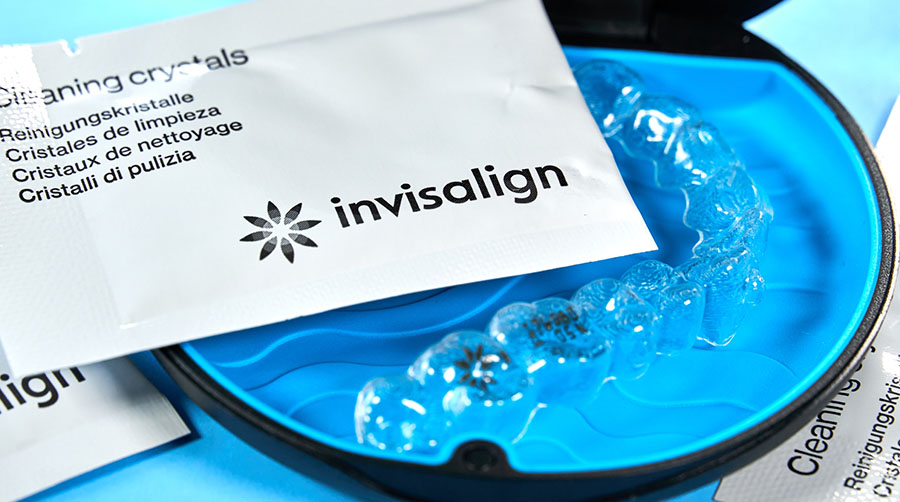Bob Quartermain: "The Outlook for Silver Is Sterling"
Source: The Gold Report (6/20/08)
In this exclusive interview with The Gold Report, Bob Quartermain takes an in-depth look at the silver market. He explains why he believes silver prices will continue to rise and tells us where to look for good values. Quartermain is the president and CEO of Silver Standard Resources Inc., a company with the largest published in-ground silver resource of any publicly traded silver company. A geologist with a Master of Science in mineral exploration, Quartermain is also president of the Silver Institute and has served as director and/or officer of a number of public resource companies.
TGR: What’s your outlook for silver in 2008, and perhaps, beyond?
RQ: The outlook for silver remains positive. Since 1990, demand has exceeded supply every year resulting in reduced stockpiles. Mine supply represents only about 75 percent of fabrication demand. The other 25 percent is made up of government sales or scrap, most of which is photographic scrap. If these secondary supplies dry up, current mine supply won't be able to keep up with demand. This will put upward pressure on silver prices.
Demand for silver has increased about 1 percent per year during the past seven years. During this same time, we've seen photographic consumption of silver drop about 39 percent. More significantly, industrial consumption of silver has increased about 36 percent during this period. That's an increase in demand, since 2001, of 120 million ounces per year. If we look at 2007 specifically, over 455 million ounces of silver were consumed in industrial applications, and those, of course, were across a wide range of products. Industrial demand now represents more than 50 percent of total annual silver demand. We expect that to continue through 2008, and going forward, to increase.
TGR: That's a significant increase in industrial demand. Can you talk a little about that?
RQ: Well, for instance, silver is used in cell phones and Palm Pilots, many consumer products used in our everyday lives. The interesting thing is that while these products are produced in large quantities, each unit requires only a small amount of silver. It's not economic to recover the silver from each unit, so it's not being recycled. It's not coming back into the marketplace.
Silver is also being used in water purification for its anti-bacterial properties. It's used in clothing, and its health care applications are increasing in a more environmentally sensitive world. I think we're going to see a rise in its use in all of these areas. And then, with the recent increase in gold prices, we're seeing greater interest in high-end designer silver jewelry, which is replacing gold jewelry. I expect to see new electronic and industrial applications for silver, and some technological breakthroughs for its use that will continue to be a driver on the consumption side.
TGR: What about from an investment standpoint?
RQ: We've seen renewed interest in silver as an investment, both in terms of owning the physical metal, and through exchange-traded funds. iShares (SLV-NASDAQ) holds over 180 million ounces of silver for investors. So, to use a bit of a pun, I would say that the outlook for this year and next year is going to be "sterling."
TGR: What are the potential obstacles to this "sterling run"? I know gold and silver are not tied together, but there seems to be some correlation.
RQ: That's true, gold and silver do move together but sometimes not to the same extent. Last year, 900 million ounces of silver were consumed at an average price of about $13 an ounce. So the total dollar amount of silver consumed last year was around $12 billion. This is a relatively small market, compared with gold or the base metals or many other commodities. Yet there's a lot more silver traded through the futures markets and futures contracts – these markets are much larger than the physical market. So we have a situation where what occurs in the paper trade market can influence price.
As you point out, a lot of the silver price movement has been dictated by gold and a lack of confidence in the U.S. dollar. With the U.S. dollar under pressure, silver has moved up over the last few years. Clearly, if there is some strengthening of the U.S. dollar, there could be some reduction in silver prices as people move out of it as an investment. As silver has such strong industrial demand, I think there will always be underlying investor interest.
TGR: What should individual investors look for when they're investing in silver or silver stocks?
RQ: Well, as we've discussed, the U.S. dollar is one of the key drivers. Silver is certainly acting in sympathy with gold. As the U.S. dollar index has fallen in the last few years, both gold and silver have increased in value. So investors need to watch the dollar.
Second, I think investors should focus on iShares. There continues to be strong movement of silver into iShares. Two years ago there was nothing; now there are 180 million ounces of silver in iShares. So long as there continues to be growth in the fund, investor sentiment for silver is likely to be strong.
Third, there's the consumption aspect. Silver's new uses in electronics, batteries, biocides and other applications will be positive for the metal. So, it's often good to be watching what's going on in the press around new consumer products. The Silver Institute publishes a quarterly report that details the new uses for silver as they develop. It's worth keeping an eye out for potential new sources of demand.
TGR: What about on the legislative side?
RQ: That's a good question. As you may be aware, in many jurisdictions around the world, silver, unlike gold, is treated not as an investment but as a commodity which is taxed. For instance, in Switzerland, you can buy physical gold at market value. But if you buy physical silver, you have to pay a Value-Added Tax on top of it. So, it makes it a less attractive investment than gold. Through the Silver Institute, we're looking at initiatives to try and level that playing field.
TGR: Going back to new uses for silver as a commodity, have you heard of any talk of Mitsui working on a silver-based catalytic converter?
RQ: Mitsui has looked at replacing platinum or palladium, which they use in their catalytic converters, with silver because silver is a great catalyst. So far they're looking at only diesel applications, primarily for farm equipment. That's a very small and specific market. But as we all know, once you develop a new use for a commodity, technological advances often follow, which can then lead to wider applications. Mitsui has talked about this initial small market, but using silver in catalytic converters creates a new inroad, and as we know, with higher oil prices and third world economies rapidly developing, there will be more vehicles on the road. If silver is another option for a better environment I think that is positive.
TGR: As the price of silver neared $21 an ounce, did you see an increase in the number of people recycling their silver possessions?
RQ: We'd have to look at some research to answer this question. On a global basis, there's a lot of silver trade going on in India because India is a very large consumer of silver jewelry. When silver prices rise, jewelry consumption tends to dry up a little in India, and we may even see some of that silver come back into the market for recycling.
However, if you look at the actual price point of silver, which is very low relative to gold, the fabrication costs that go into silver jewelry often push the price point of the end product up significantly. If you take an ounce of silver and make it into silver jewelry, you're probably going to end up selling the jewelry at about 5 to 10 times the value of the silver. It's different for gold, because the metal costs so much more per ounce than silver. The fabrication costs put the final gold product at only about two to three times the value of the gold itself. So while it may be worth melting down the gold and recycling it, that's often not the case for silver.
That’s why we don’t often see large movements of physical metal into recycling. Back in the late 1970’s when the Hunt Brothers tried to corner the silver market, silver prices jumped from $3 to $50 per ounce. Silver scrap increased from 130 million ounces in 1979 to 165 million ounces in 1980, and back to 125 million ounces in 1981. So those high prices brought only another 25 percent of additional scrap into the marketplace.
TGR: Would you say that most of the silver recycling now is related to photography?
RQ: Yes, that’s one of the largest sources of recycled silver. I'm involved with a small company that recycles silver from the photographic industry. Hospitals or labs that have old photographs or x-rays on file, will often dispose of them. The silver is recovered and becomes part of the scrap supply network.
Last year about 130 to 140 million ounces of silver were used in photography. We might see 50 percent or more of that recycled.
TGR: On another topic, what's your thinking on nationalization and geopolitics as they relate to investing in silver?
RQ: I think investors have to look at the entire political landscape, whether it's nationalization that occurs at the country level, or regulatory changes at a provincial level. For example, in Alberta, which is considered the conservative bastion of the Canadian economy, they created an excess profits tax last year on fossil fuels. So you can’t tell a developing country that it’s wrong to do something similar. The same applies with respect to mining laws – developed countries can’t expect developing countries to operate by a different set of laws. The resource industry can’t control the regulatory environments of individual countries. There will always be the potential for international regulations that could have a negative impact on operations and profits.
So what do we do? At Silver Standard Resources Inc. (SSRI-NASDAQ: SSO-TSX), we carefully evaluate the geographic areas before we invest in them. We try to choose those countries where there's a long history of mining, such as Mexico, or Peru, or Chile. We look for countries that have an understanding of mining and a recognition of its contributions to the economy in providing jobs and providing the products we use in our everyday life.
TGR: There’s more regulation in developed countries, yet those are the countries where demand is highest, right?
RQ: That’s true. Here in North America we have our electronics, Palm Pilots, flat screen TV’s, etc. that all require silver. We may regulate and shut down mining here from over regulation, but we still want these products. So we have to go to jurisdictions where mining laws support mining development. On the whole, the international mining fraternity operates at a very high environmental standard. Here in Canada and in the United States we have environmental laws that require us to make mining as benign as possible. We export and transport those same standards to all of our operations irrespective of the jurisdiction. We try to be good citizens with the local communities where our projects are located, and I think that if you're providing jobs and being socially responsible, then you don't have to be as concerned about nationalization.
But we all know that every four years politicians change. Mines, on the other hand, are much longer-term projects. So there’s always the potential for shorter term disruption from regulatory or tax law changes.
TGR: Where do you think we are now in this bull market for precious metals? This run began in 2001, and back then, we could expect some big moves. Now, we seem to have hit a wall of worries. What are your thoughts?
RQ: My background is in geology, not as much in macroeconomics. So my comments on this topic are more personal. They stem from my travels over the last year to China and Southeast Asia, in my role as head of the Silver Institute. I recently came back from a trip to Dubai and Abu Dhabi. We’re now looking at these high oil prices and commodity prices, and a transference of wealth. We've already seen a large transference of U.S. dollars to China through trade because of China's low labor rates and less expensive products.
So what we're now seeing is a redistribution of capital as it moves out of the developed economies into those that are supplying the less expensive products and oil. The money is still there, it’s just more heavily concentrated in some cases into fewer hands. It will ultimately be invested somewhere. Maybe it will be invested in U.S. dollars, or Euros. But I think there’s a movement toward holding hard assets, such as commodities and certainly precious metals. If we look at precious metals separately, we have had a very good run up these last few years. We may well have some retrenchment in prices now but then it continues to go forward again. I think we're seeing a substantial wealth creation because of natural resources, in economies that didn't have such wealth before. We’re also seeing more people purchasing consumer goods. And as we’ve discussed, a lot of these consumer goods, especially electronics, contain silver. Ten years ago, China made up only a fraction of the U.S. GDP. And now China has become almost the third largest economy in the world—and growing. And its silver consumption has doubled in the last five years.
So to answer your question, I think we may see some volatility along the way, as investors stop and reflect on which way the precious metals markets are headed. But from a personal point of view, I am very long on precious metals and base metals because I think the development that we're seeing in the new economies bodes well for consumer goods and ultimately for precious metals. There may be some short-term contraction in the world economies, when people stop buying consumer goods, and that will impact metal prices. But I suspect that this cycle will continue for some time yet.
TGR: Let’s talk about three of the companies you’re involved with, beginning with Silver Standard. The company is transitioning from an exploration company to a production company. Could you give us a progress report?
RQ: Silver Standard has been involved in silver since 1993 when we started acquiring silver projects. At that time, silver prices were low but we believed prices would rise to the point where it made sense to put our projects into production. Over the last 16 years, we have acquired the largest in-ground resources of any publicly-traded company. We have 195 million ounces of reserves. We have 755 million ounces of measured and indicated resources. We have 600 million ounces of inferred resources in 17 projects around the world.
The first project we're advancing into production is the Pirquitas Project in northern Argentina. About 18 months ago we made the production decision and we expect to commission the plant by the fourth quarter of this year. We're spending $220 million to place this project into production. It will be a sizeable silver producer and will produce between 10 to 11 million ounces of silver a year over what we see as a 14-year mine life based on the current reserves. By this time next year, we should have completed the transition from explorer to producer. This will allow us to focus on our other 16 projects, and bring them along the development pipeline so that Silver Standard can grow organically and become a significant silver producer.
TGR: That’s exciting. How about bringing us up to date on Canplats Resources Corporation (CPQ-TSX.V).
RQ: I’ve been a director of Canplats since 2000. We had focused Canplats initially on looking for platinum group metals in the Nipigon Lake area of Ontario. But we also had some good technical successes in Mexico, so the Board decided to focus on projects and areas in Mexico. Over the last few years, Canplats has picked up some properties, and drilled them with some technical success.
A little over a year ago, Canplats was prospecting for grassroots opportunities and came up with a project called Camino Rojo where gold and silver, as well as base metals, were discovered near surface. They trenched it and showed the values were there. The company staked a large area, drilled, and found extensive gold and silver mineralization, which continues to many hundreds of meters at depth. So with the continued positive drill results that we get at the project, the market continues to react favorably to it. It's in part driven by the fact that the company is located about 50 kilometers south of the Penasquitos project that GoldCorp Inc. (GG – NYSE; G-TSX) has, which is a very large tonnage gold, silver, and base metal project with grades not too dissimilar from those of Canplats. It's early and we continue to drill and the results to date show a fairly consistent mineralized zone. Shareholders will continue to benefit from positive drill results.
TGR: And the third company, Silver Recycling Company Inc. (TSR.V)?
RQ: I’ve been involved with Silver Recycling as a private investor for a few years now. Through my role at the Silver Institute, I’ve been interested in silver recycling, particularly photography recycling over the last few years. Silver Recycling allows investors who are interested in that aspect of the silver market to invest through a publicly traded vehicle. The company is looking to grow through its photographic silver recycling business.
TGR: Do you think silver recycling, as a business, is growing?
RQ: Silver recycling businesses are frequently private and family-owned operations. These businesses often haven't been growing because film photography is declining, so there’s less photographic scrap to recycle. But as the price of silver price goes up, these businesses have become more profitable. As a result, they've got better margins. By taking the company public, and growing it through the acquisition of private businesses with similar operations, the company is able to achieve a larger mass. That attracts investors who gain exposure to the silver market in another way.
TGR: Let’s finish up by talking about the Silver Institute.
RQ: The Silver Institute is comprised of many companies–mining, fabrications, financial—focused on silver. The purpose of the Silver Institute is to promote the use of silver and to expand its range of applications through research and technological advances. We promote a better understanding of silver through our website and our annual World Silver Survey. Every year we have a conference in China where we hope to learn more about that market. This will be our seventh year in China. Our website posts a lot of good historical data on silver. We also publish a quarterly newsletter that describes some of our new initiatives.



























































